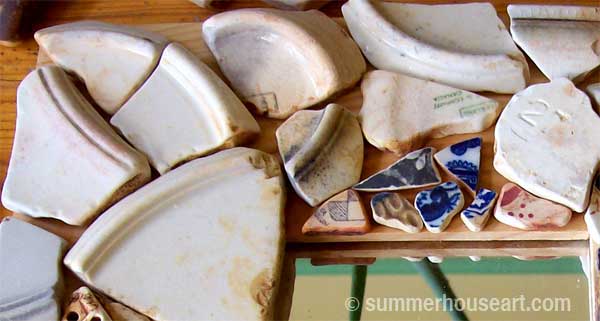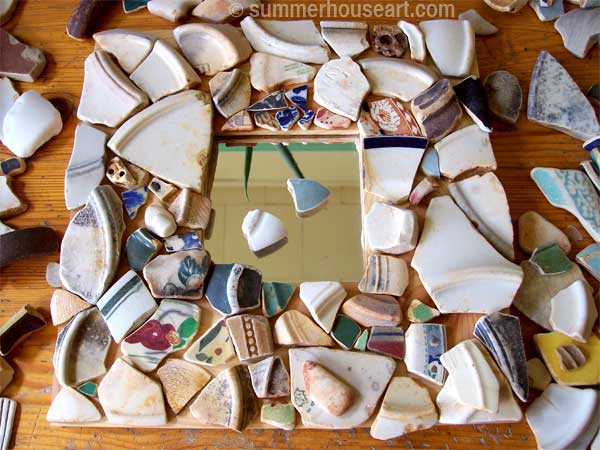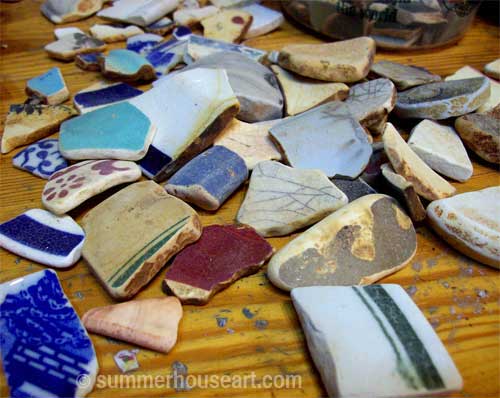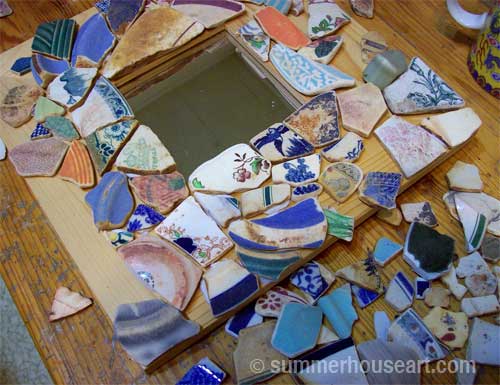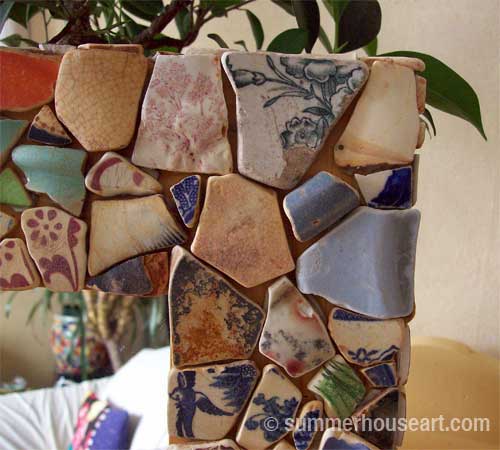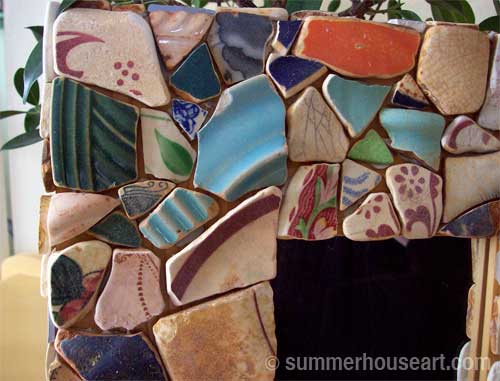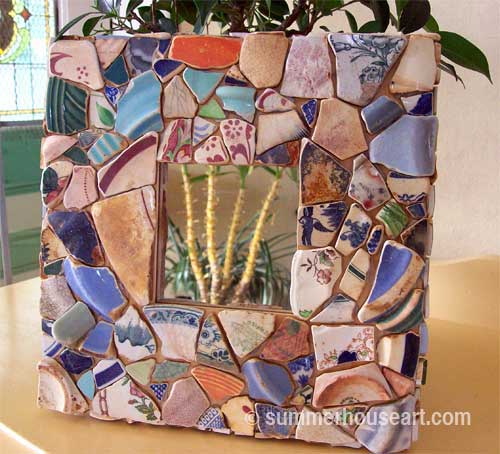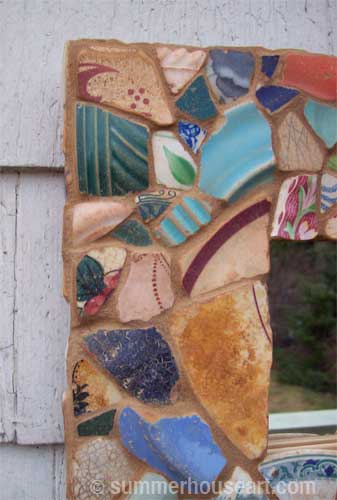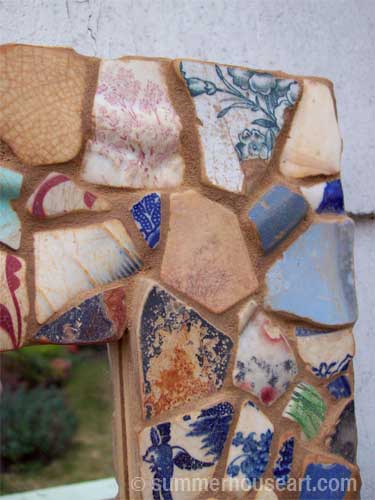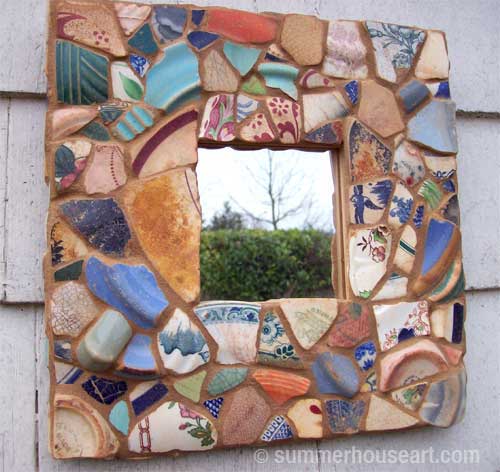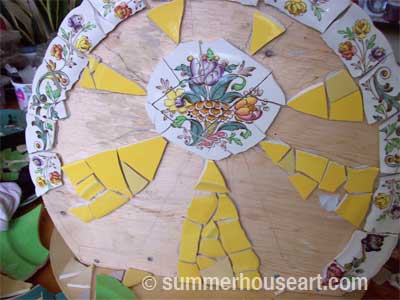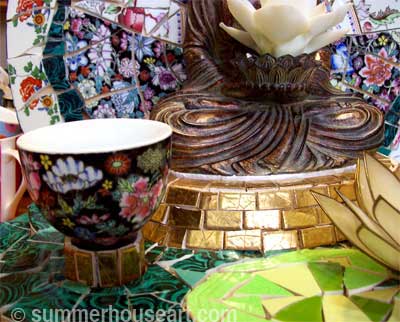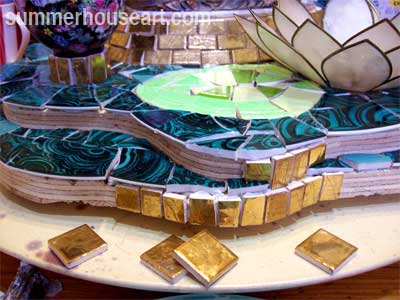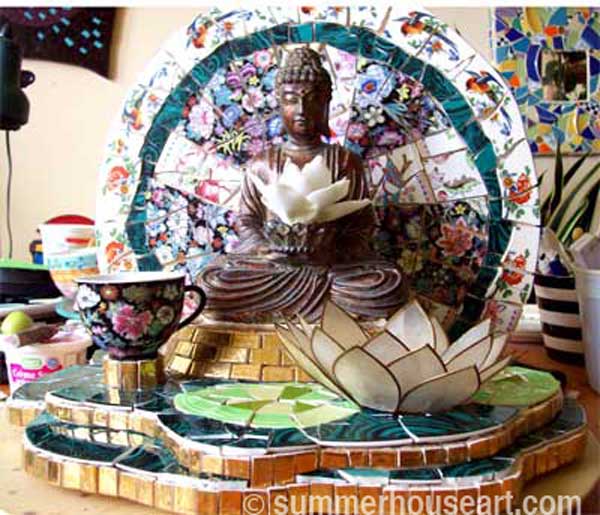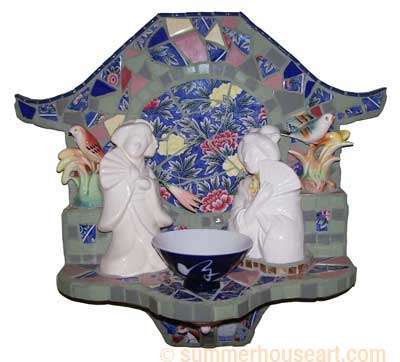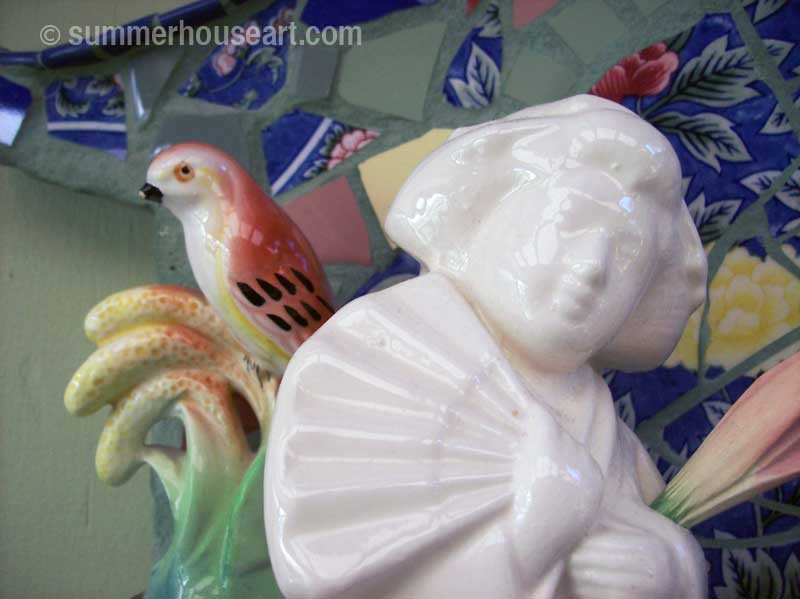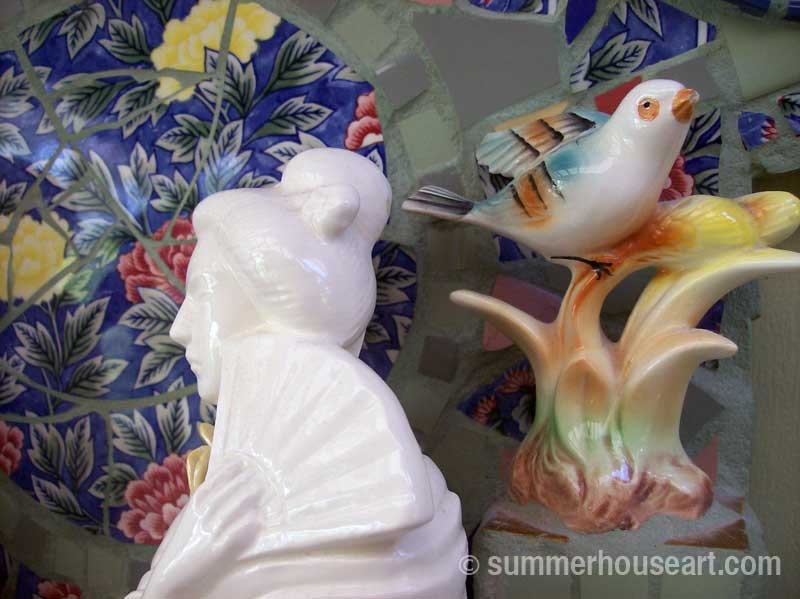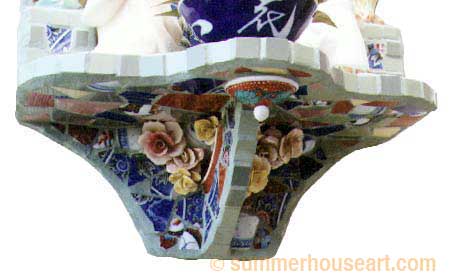Or how this box became
Sometimes, when you teach mosaics, you get an idea from a student. And one of my students this spring, decided to do a mosaic box. A Tea Box complete with little teapot ornaments on top. It’s going to look great. Now, I’ve made shrines, pots, trays and wall pieces but, for some odd reason, I’ve never done a box in mosaic and now seemed a good time to try. For two reasons, one, to try it out and see what problems it would present and two, suddenly I had shelves full of ornaments that could be quite useful in a new way. A little collection of bunnies came into my view which also sparked a memory of some really cool “carrot” tiles I’d been saving for some reason. An ah hah moment if ever.
So off to the thrift store for a suitable box. Yes the pic above is blurry, it’s not your eyes. Sorry about that. And then a little playing about with bunnies and placement.
Starting with corners to use the “carrot” tiles. Mapping out the placement of bunnies. And that big patch on the front is for a loverly bunch of ceramic carrots I just happened to have lying around. I just love it when everything comes together.
After many hours of applying bits and pieces of various dishes and tiles, it was time to grout. I left the spaces open to glue on the bunnies and carrots later.
A little close up view of the dishes used. This is a Pique Assiette type of mosaic which in rough translation means “stolen dishes”. I had one tiny little dish that had a map of Wales on it and the colors and texture just seemed to work well with the other dishes.
Had to do a bit of adjusting with the bunnies and after gluing them in place, I mixed up a tiny bit of grout and finished the top.
Oh, I also painted the inside a nice “carroty” orange. Just for a little surprise. The bunnies seem a little surprised at being tipped.
So here they are, all waiting for more carrots.
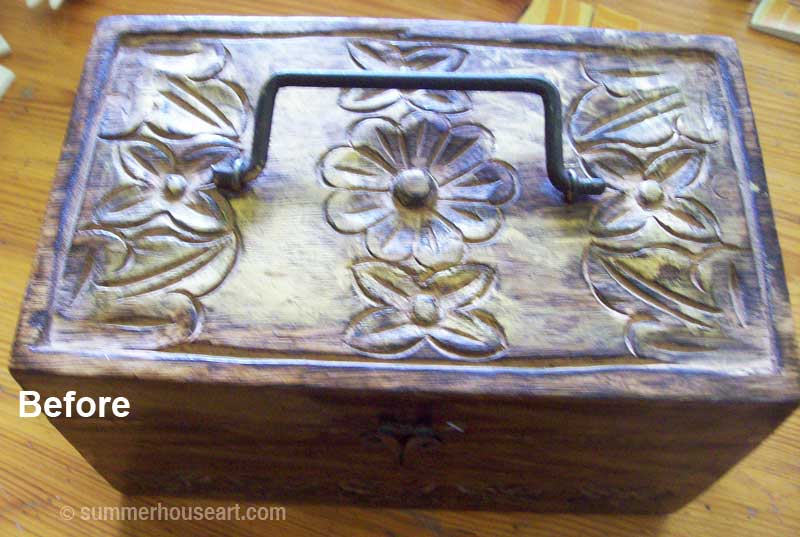
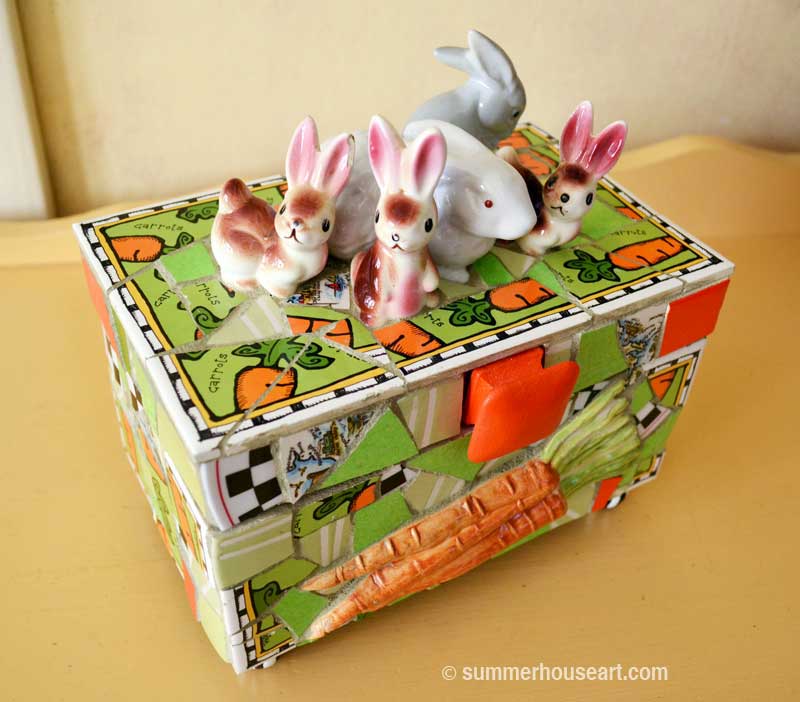
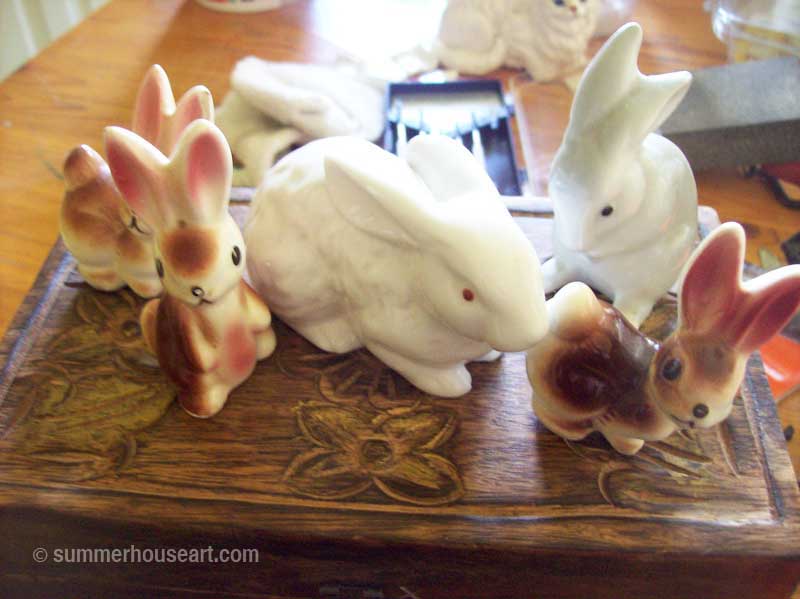
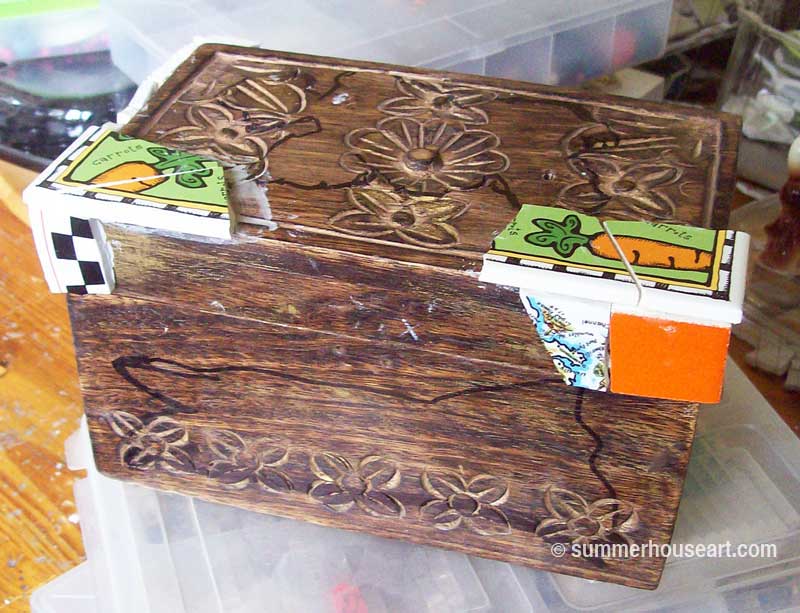
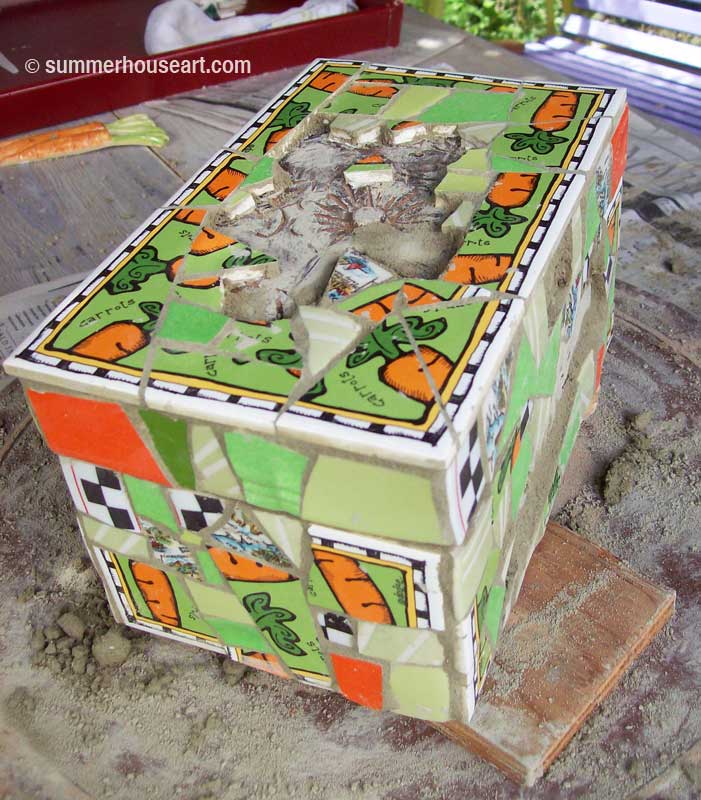
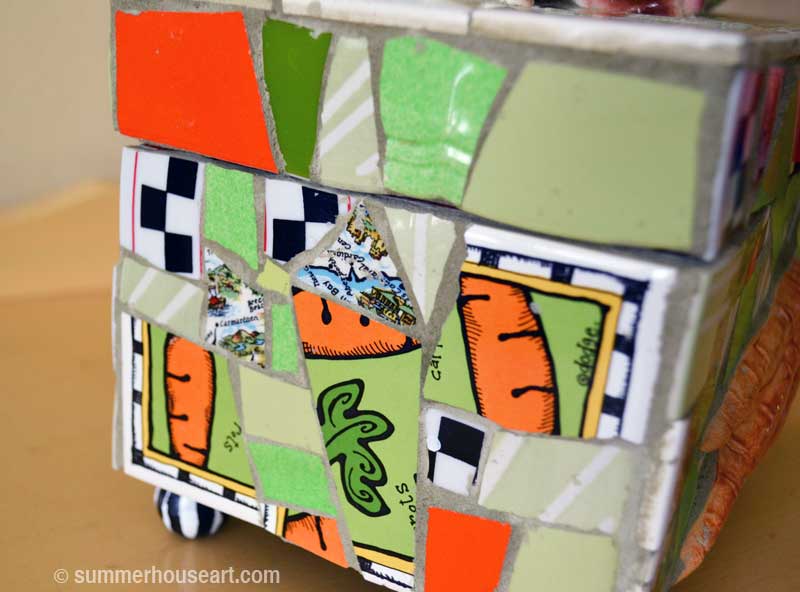
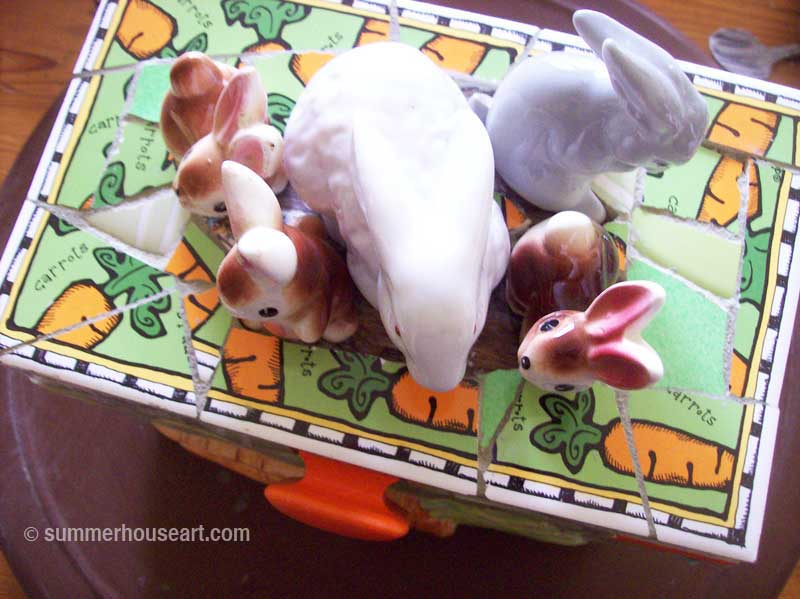
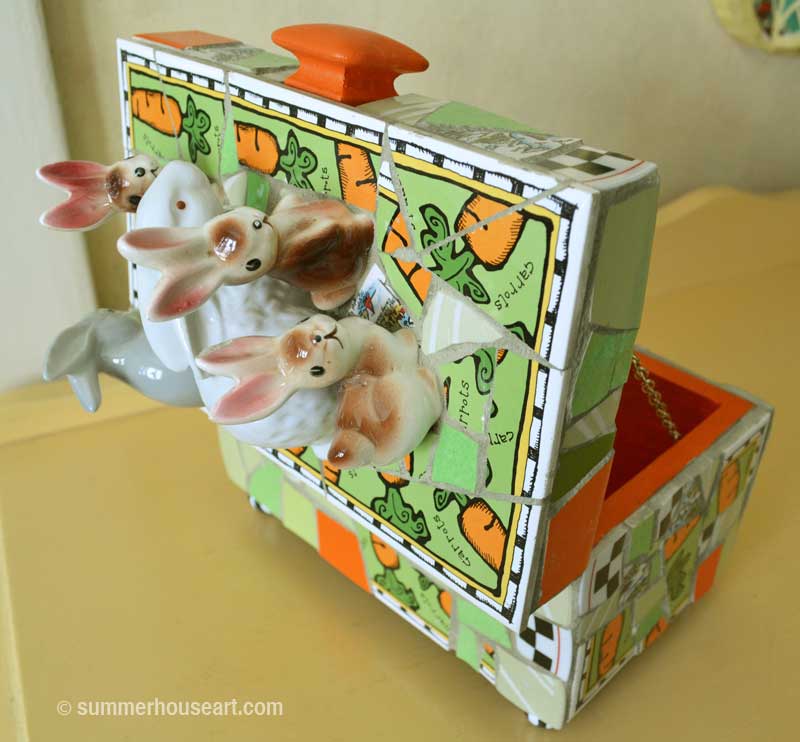
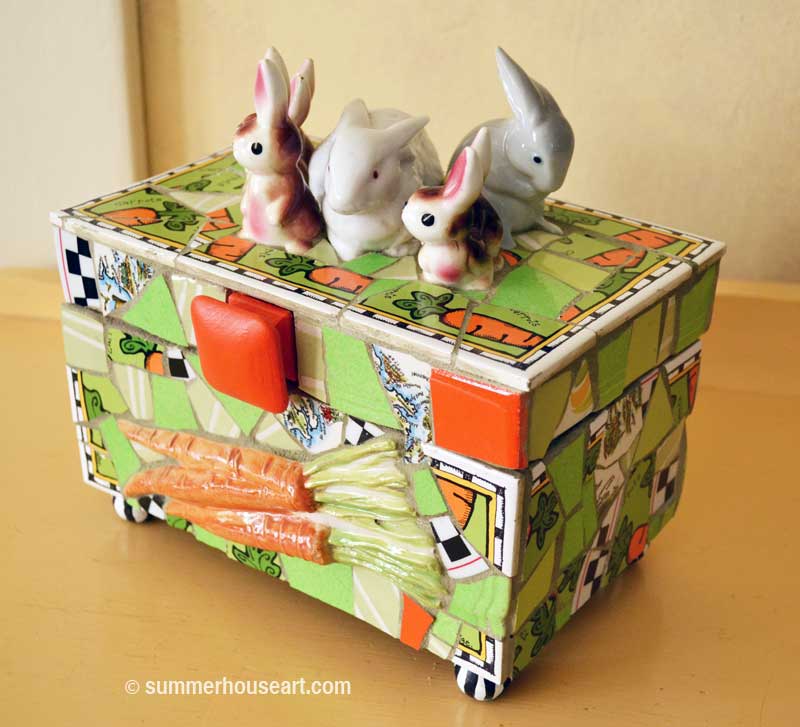
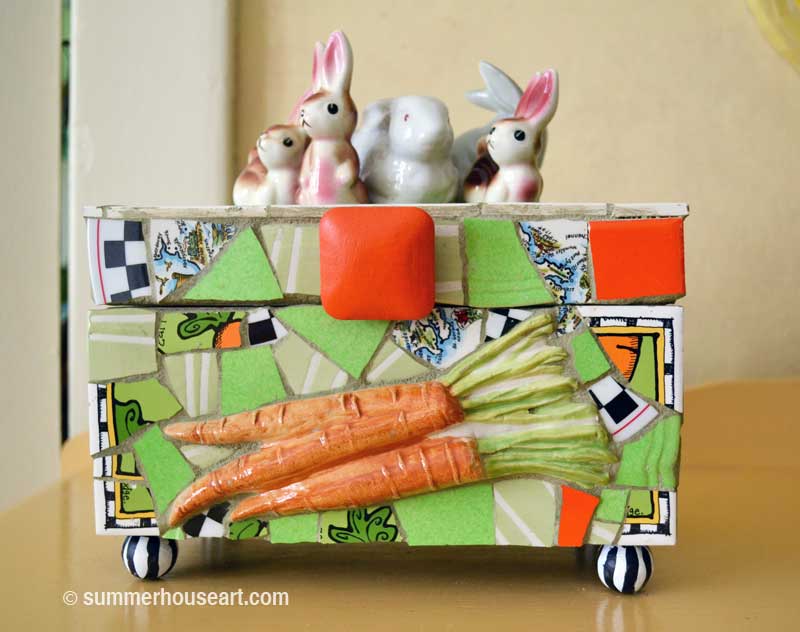

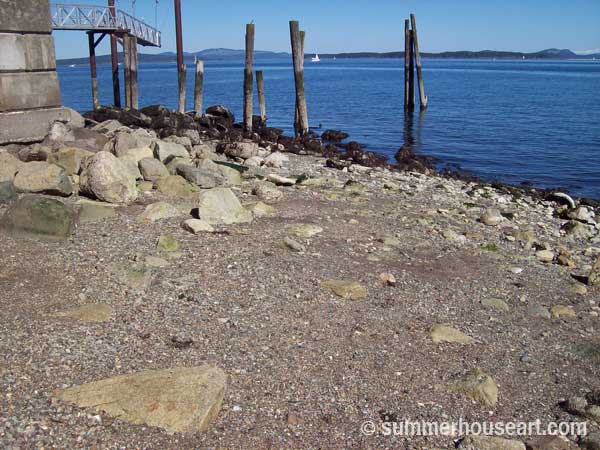
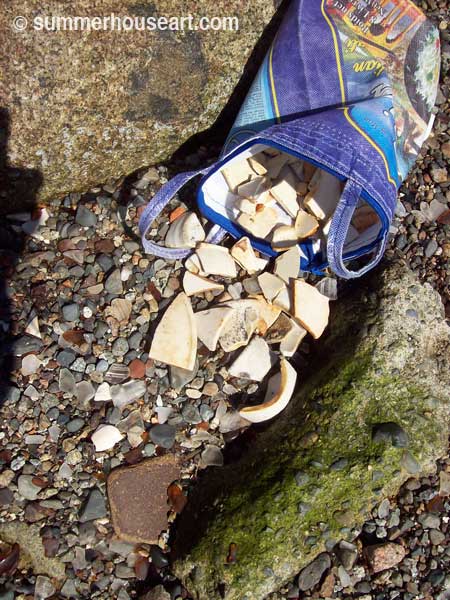
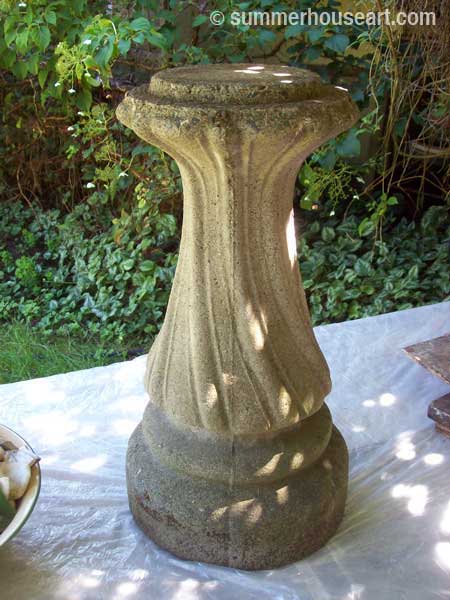
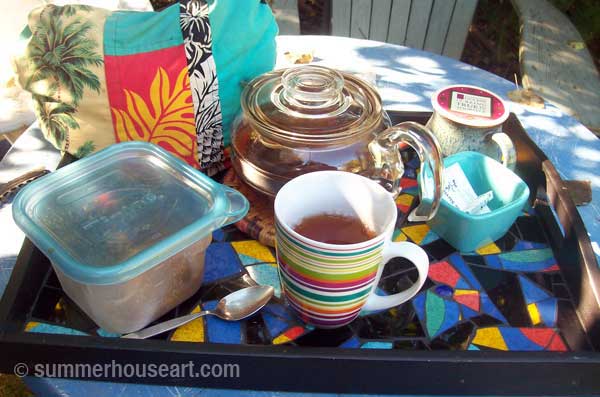
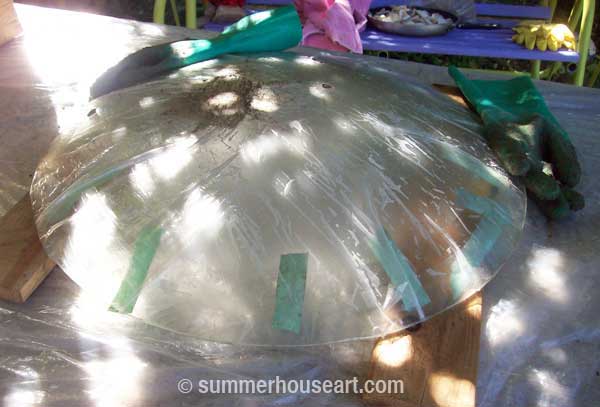
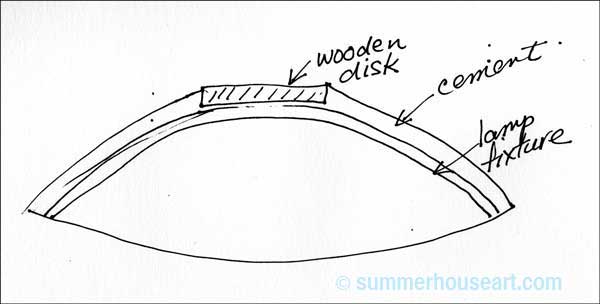
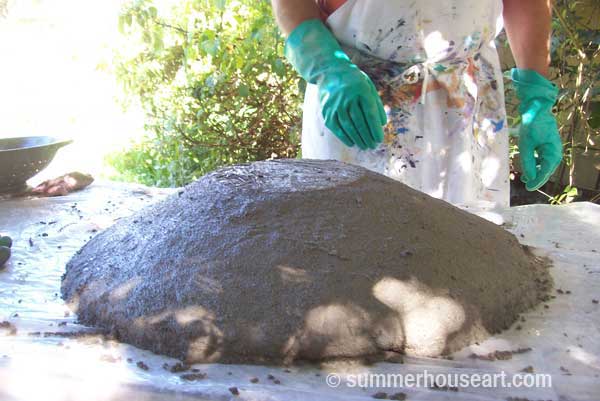
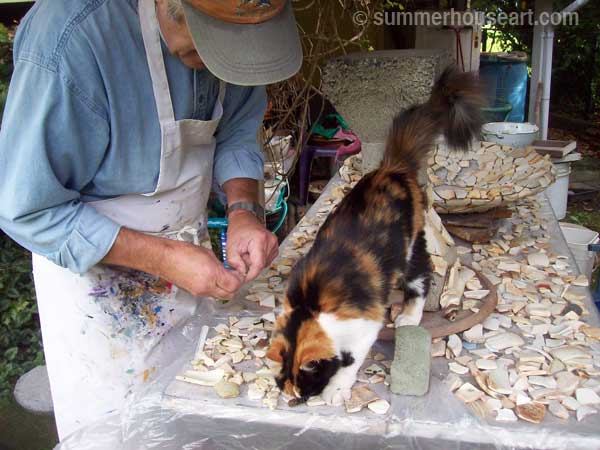
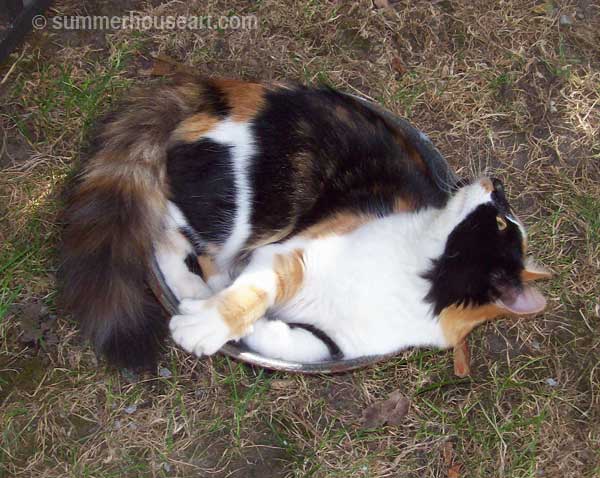
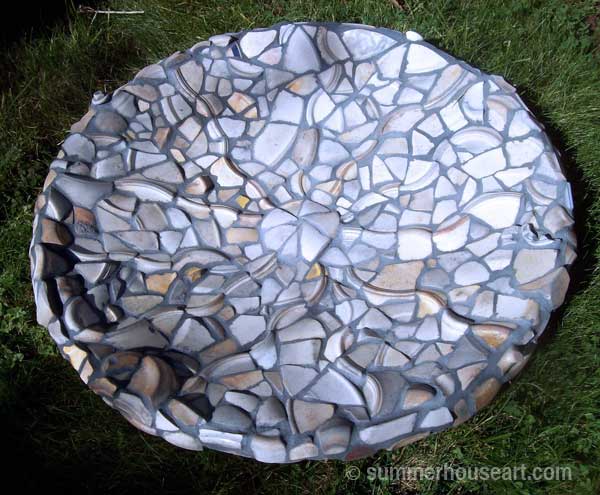
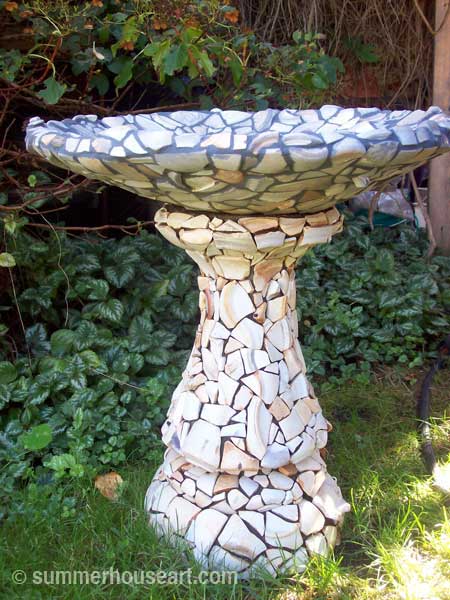
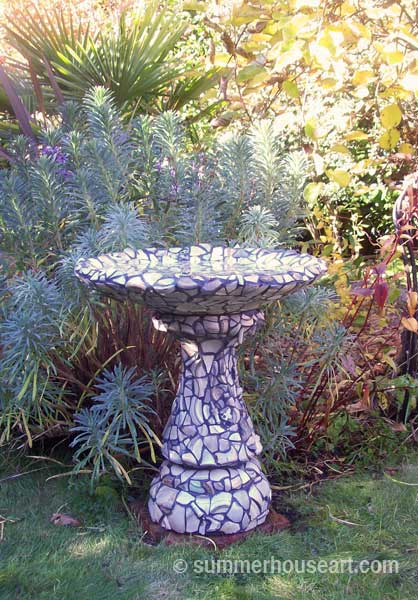
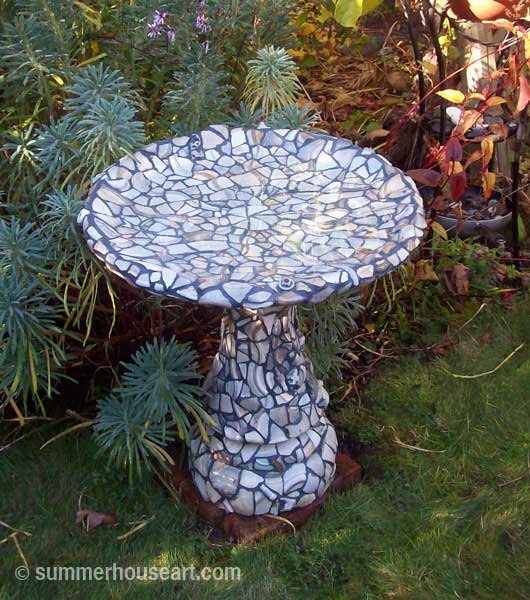
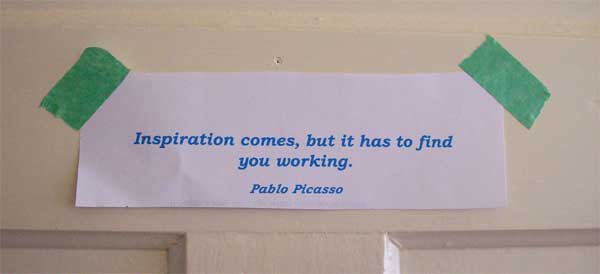
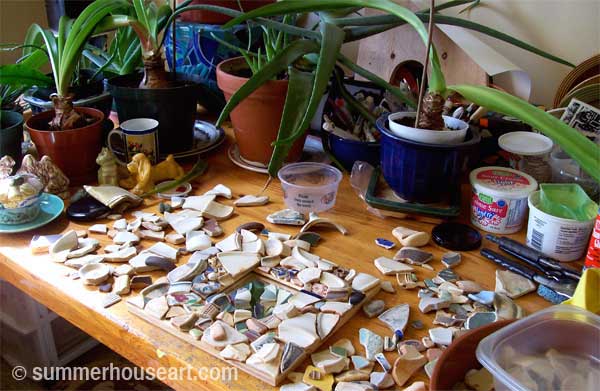
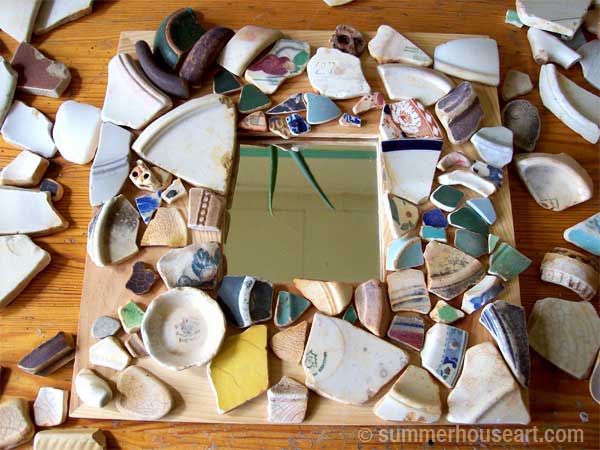 Later I realized that I was enjoying the off white bits, the bits that had curves of the plate rims on them and started to see that I could use them as the focus and create an interesting surface with those.
Later I realized that I was enjoying the off white bits, the bits that had curves of the plate rims on them and started to see that I could use them as the focus and create an interesting surface with those.